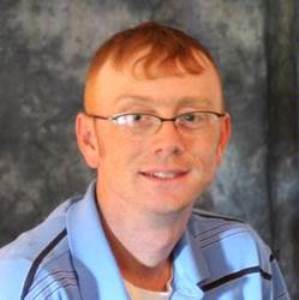Mike Rudibaugh is principal investigator for the Geospatial Technology Advantage Project at Kaskaskia College. The project’s external evaluator is Elaine Craft of SC ATE.
How do your evaluation results come into play with regard to making decisions about your project?
External evaluation feedback has been critical to assist the grant team with evaluating our timelines relating to meeting the grant’s goals. This feedback has literally reshaped our grant team’s view of our goals, budget, and measurable outcomes that we could realistically achieve within the life cycle of the grant. Use of the external evaluator’s logic model has been critical to assist the grant team with tracking goals, objectives, and measurable outcomes for a successful grant.
Can you give an example of something you learned from your evaluation that led you to make a change in your project?
Using observations from our external evaluator’s site visit and report led to major shifts in the grant’s overall focus. Her recommendations suggested that a revised scope of work document needed to be submitted to the grant’s program officer. Simply put, the external evaluation process revealed that the grant’s goals and objectives were overly ambitious considering the institution was new to the ATE program, the original PI retired after year one, and the rural nature of the region was slow to adopt a dynamic new STEM field like geospatial technology. These recommendations and actions led to the development of a revised scope of work document outlining more achievable grant goals. They supported a long-term approach to building a viable geospatial technology program through integration approaches with existing programs on campus.
What types of reports does your evaluator provide and what type of information do you find most useful?
Our evaluator produces annual written reports and also does one annual site visit each year. Each one of these events and resources assists the grant team with connecting the different elements of the grant together. The evaluator often sees the big picture and at times really helps the college open doors and connect resources together to move the project forward. The ATE grant and evaluation process provided a platform to discuss program integration with faculty directing other programs potentially benefitting from integrating geospatial technology. Linking these success stories into the grant’s annual report has helped us grow more on-campus champions for STEM integration using geospatial technology across the curriculum. The annual site visit has been critical to develop these partnerships. The external evaluator helps cut through the often historic curriculum partnership barriers between transfer and occupation programs on community college campuses. Focusing on positive student outcomes like program completion and job attainment has assisted faculty to focus on issues benefitting students.

Except where noted, all content on this website is licensed under a Creative Commons Attribution-NonCommercial-ShareAlike 4.0 International License.



 EvaluATE is supported by the National Science Foundation under grant number 2332143. Any opinions, findings, and conclusions or recommendations expressed on this site are those of the authors and do not necessarily reflect the views of the National Science Foundation.
EvaluATE is supported by the National Science Foundation under grant number 2332143. Any opinions, findings, and conclusions or recommendations expressed on this site are those of the authors and do not necessarily reflect the views of the National Science Foundation.